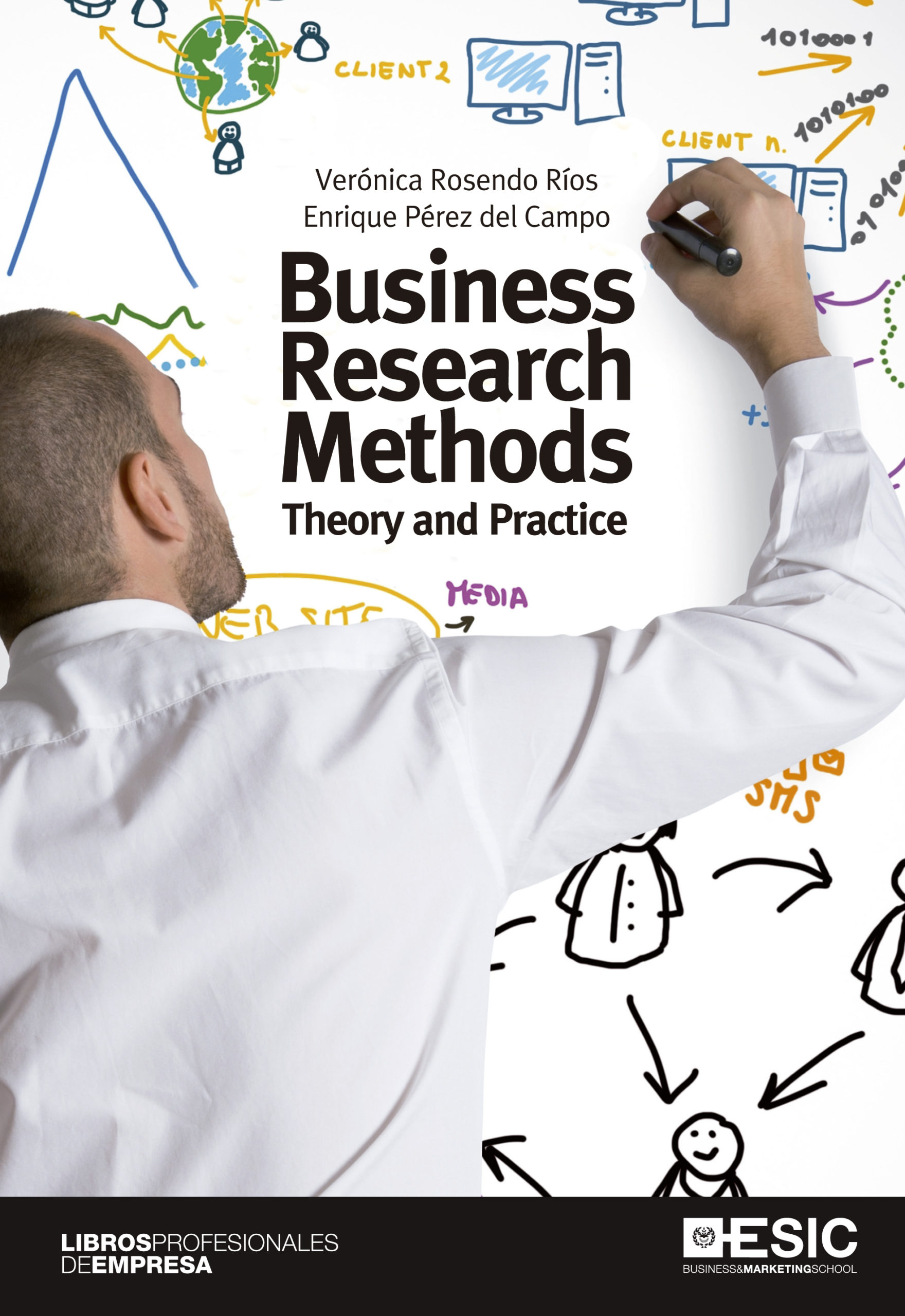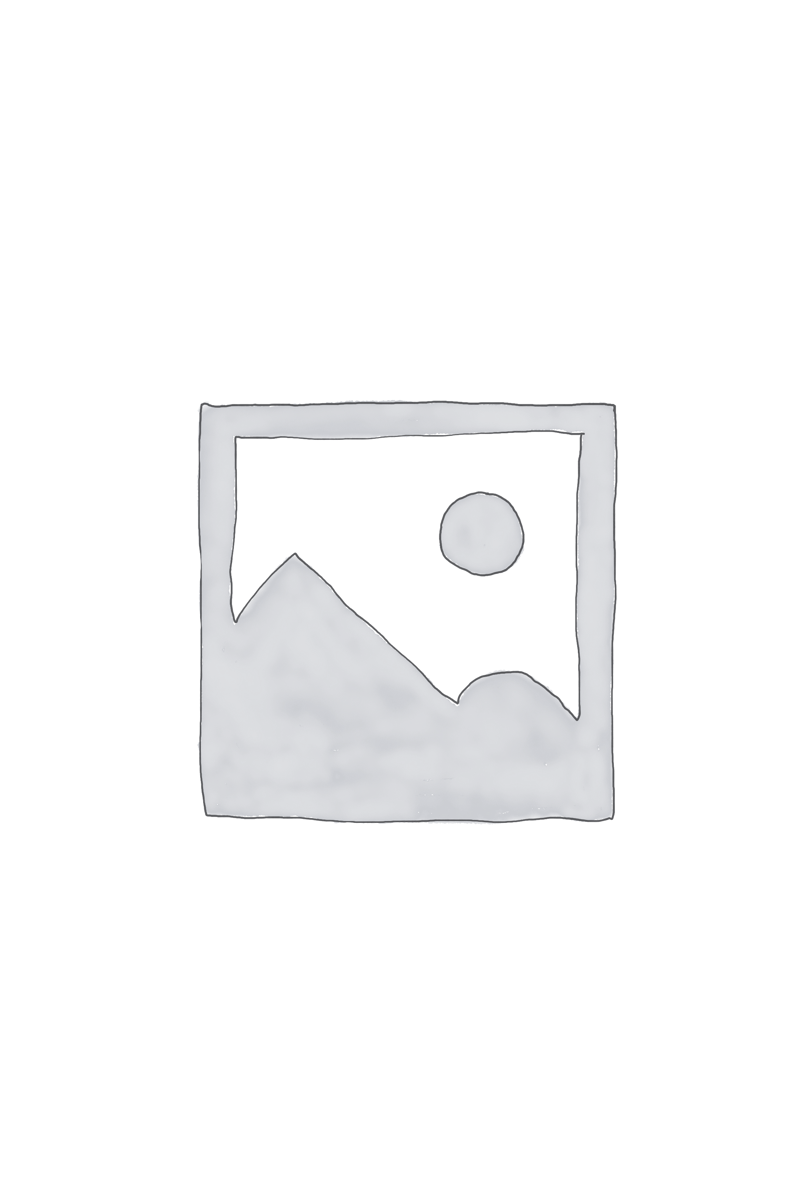Condiciones de venta
Todas las compras realizadas desde el 29 de julio al 31 de agosto serán enviadas a partir del 1 de septiembre. Disculpen las molestias.
Información Legal – Contacto. El titular de esta “Tienda On Line”, que ofrece sus productos y servicios a los usuarios, es la “Escuela de Estudios Superiores ESIC Sacerdotes del Sagrado Corazón de Jesús, PP.RR.”, con nombre comercial “ESIC Business & Marketing School” o “ESIC”, centro privado fundado en 1965 por la institución religiosa de los Sacerdotes del Sagrado Corazón de Jesús, Padres Reparadores, con domicilio en Avd. Valdenigrales, s/n, 28223 – Pozuelo de Alarcón, Madrid (España).
NIF: R2800828B
Contacto: Todos los datos de contacto y vías para hacerlo están en www.esic.edu/esicstore [“Contacto”]
Teléfono: 91.452.41.00
Correo electrónico: contact.store@esic.edu
Por su condición de Institución Religiosa, ESIC, como Congregación/Casa de Pozuelo, está inscrita en el Registro Especial de Entidades Religiosas del Ministerio de Justicia con el nº 003159 (antiguo 789-/12-SE/B).
ACEPTACIÓN DE LAS CONDICIONES
La parte compradora o cliente, en el momento de efectuar su solicitud de producto o servicio, tendrá a su disposición las presentes condiciones de venta y, en su caso, prestación de servicios, según se establezca en la página del pedido o solicitud, así como el precio con y sin impuestos, y, en su caso, todos los costes adicionales de envío, en función del lugar de entrega. El comprador declara aceptar estas condiciones expresamente y sin reserva alguna en el momento de realización del pedido, aceptando de manera plena, expresa y completa las presentes condiciones de venta del producto o servicio.
- Vigencia
Las presentes condiciones generales de venta rigen las relaciones y la utilización del sitio de internet www.esic.edu/esicstore para la venta de productos, según se especifica en cada una de las páginas y solicitudes de pedido que se ofrecen por parte de la Escuela de Estudios Superiores ESIC Sacerdotes del Sagrado Corazón de Jesús, PP.RR. (en adelante ESIC; para mayor detalle véase la condición 2: Parte vendedora) a los clientes interesados en adquirir los productos que, en cada momento, se ofrecen.
El objeto de la venta es, sin que por ello quede limitada a la mencionada en estas condiciones, según los casos y la oferta que en cada momento exista en la concreta Web:
- libros y otros son productos editoriales en formato papel,
- ropa y complementos,
- mochilas,
- material de escritorio,
- artículos promocionales de ESIC,
- y cualesquiera otros productos que figuren en la propia tienda.
Únicamente serán válidas las condiciones de venta de ESIC en la versión vigente correspondiente que se acepta por el consumidor y usuario en el momento de adquirir el producto o servicio. ESIC podrá modificar en cualquier momento las presentes condiciones de venta, pudiéndolas adaptar a las circunstancias legales y económicas del momento. La modificación entrará en vigor a partir del siguiente pedido o solicitud de compra que el cliente curse a través del portal de ESIC, pudiendo el cliente no aceptar las nuevas condiciones.
- Parte vendedora
La parte vendedora es Escuelas de Estudios Superiores ESIC Sacerdotes del Sagrado Corazón de Jesús PP.RR. (ESIC Business & Marketing School o ESIC), cuyos datos completos y de contacto se encuentran al comienzo de estas condiciones.
- Precios
El precio de venta de los productos o servicios que se considera vinculante para un pedido es el que está en vigor en nuestra página web o el que aparece en nuestros folletos, listas de precios, etc. (sin perjuicio de que puedan existir erratas que serán corregidas en el instante en que se detecten). No obstante, en caso de errores de escritura, imprenta, edición o de cálculo y que sean absurdos, desorbitantes, nos reservamos el derecho de compensar al cliente o a desistir de la operación.
- Establecimiento del contrato
4.1 La solicitud del cliente se considera una oferta vinculante para ESIC de un contrato de compraventa sobre los productos o servicios que se comercialicen por esta vía. El contrato se establece en el momento en el que ESIC acepta expresamente el pedido.
ESIC se reserva el derecho a no confirmar el pedido en los casos de falta de pago por parte del comprador, falta de producto, pedido anormal o ilegible, no identificado o alguna otra circunstancia que aconseje no entregar el pedido. En tal caso contactaremos con el comprador por los medios que nos haya proporcionado.
4.2 La oferta de ESIC de un contrato de compraventa o de prestación de servicios, es concluida por el cliente al finalizar con éxito el paso descrito en el apartado siguiente, durante el proceso de pedido. En ese momento (cuando el pedido llega a ESIC) se entenderá celebrado el contrato.
4.3 Durante el procedimiento de pedido y antes de su finalización, el cliente tiene la posibilidad de comprobar las presentes condiciones de venta y que las indicaciones que el mismo ha realizado están exentas de errores antes de que el pedido se haga llegar on line finalmente a ESIC.
4.4 El cliente es responsable de incluir sus datos de forma veraz en el formulario de alta en la tienda.
- Entrega y autorización de acceso
5.1 ESIC tramita sus pedidos y solicitudes sin demoras innecesarias para la entrega de los productos en un plazo no superior a treinta días para productos o servicios entregados a distancia, aunque el plazo real suele ser inferior. En el caso de entrega de productos, si no hubiera en stock, se le podrá entregar uno de similar calidad siempre que el cliente manifieste su conformidad o, en caso contrario, se le devolverá íntegramente el importe abonado. Según lo anterior, al aceptar estas condiciones el comprador excluye cualquier posible reclamación debido a la imposibilidad del cumplimiento del contrato.
En el caso de productos físicos, ESIC se reserva el derecho a utilizar todos los medios de que disponga para efectuar la entrega del producto en el lugar y fecha designados por el comprador, utilizando preferentemente la mensajería. En caso de que ESIC no ponga a disposición del comprador los productos comprados en el citado plazo, éste tendrá derecho a emplazar a ESIC para que en un plazo adicional no superior a 20 días ponga los artículos comprados a disposición del mismo. Si no se cumpliese dicho plazo adicional el cliente tendrá derecho la devolución de la compra y al consiguiente reintegro de las cantidades abonadas en la compra. Acordada la devolución y consiguiente abono de cantidades realizadas por el comprador, no procede reclamación alguna por daños y perjuicios, presentes o futuros, gastos directos o indirectos, ni bajo las modalidades de daño emergente o lucro cesante. Los citados plazos son de aplicación también en Península y Baleares.
5.2 En caso de productos físicos, si no se produce la entrega o tiene defectos de origen que le hagan inservible por causas imputables a ESIC se devolverá el dinero pagado por la misma vía en que fue abonado, previa entrega del producto defectuoso a cuenta de ESIC.
5.3 La parte compradora o cliente que efectúa el pago, se obliga a cumplir con las obligaciones económicas incluidas en el documento de solicitud o pedido de los productos o servicios contratados. El cliente acepta que, en caso de solicitar la devolución del producto (sin defectos o que no sean imputables a ESIC), después de finalizado el plazo de desistimiento, las cantidades no serán reembolsables.
5.4 En caso de que ESIC tenga fundadas sospechas de que los productos y servicios que se ofrecen on line y sean entregados se están utilizando de forma no permitida o abusiva, ESIC se reserva el derecho de tomar medidas adecuadas después de establecer contacto con el cliente. Estas medidas pueden ser, entre otras, la restricción de acceso a otros productos, la limitación de acceso a la Web o la cancelación del contrato.
- Pago, vencimiento y retrasos en los pagos
6.1 El cliente efectuará los pagos sin ocasionar gastos adicionales y sin hacer ningún tipo de deducción. Se habrá de observar el cumplimiento de todas las prescripciones referentes a operaciones con divisas, aunque los pagos se realizarán en euros o divisa convertible en el momento del pago. El cliente no podrá compensar ni descontar de cantidades adeudadas por ESIC aquéllas que el cliente reclame a ESIC.
6.2 Para los productos que se ofrecen on line, el cliente utilizará la forma de pago de tarjeta de crédito. Una vez realizado el pago se remitirá el comprobante de pago al cliente por los medios establecidos al efecto.
6.3 Los pagos se realizarán por adelantado mediante el sistema o sistemas de pago que se ofrezcan en cada momento, compatibles con las ventas a distancia.
6.4 Aunque el pago se realiza por adelantado, en caso de que pudiera producirse una demora en el pago, todos los gastos relacionados con el cobro de la deuda, tales como gastos de apremio, gastos de aduana y todas las costas que surjan como consecuencia de una representación legal tanto en procedimientos judiciales como extrajudiciales, corren a cargo del cliente. ESIC no está obligado a enviar previamente una nota de apremio o intimación.
6.5 El cliente acepta que sean cargados en su tarjeta o sistema de pago cualesquiera gastos, intereses y recargos en que hubiera incurrido por aplicación de las presentes condiciones.
- Reserva de propiedad
ESIC se reserva el derecho de propiedad de los productos hasta que se produzca el pago íntegro de los mismos. En caso de que un tercero tuviera acceso a estos productos o servicios como consecuencia de un procedimiento de embargo o insolvencia, el cliente ha de comunicarlo de inmediato y por escrito a ESIC y advertir a este tercero sobre los derechos de propiedad de ESIC.
- Derecho de desistimiento.
8.1 El cliente puede desistir de un contrato ya establecido de venta a distancia, o puede revocar una declaración de intención de contrato de venta a distancia, en un plazo de 14 días naturales sin indicar el motivo y sin incurrir en ningún coste. El plazo comienza el día de celebración del contrato según apartado 4.2 (pago y aceptación de las condiciones).
8.2 Para ejercer el derecho de desistimiento, debe notificarnos su decisión a través del correo electrónico. Para ello, copie el modelo inserto a continuación y envíelo electrónicamente a contact.store@esic.edu. Si recurre a esa opción, le comunicaremos sin demora en un soporte duradero (por ejemplo, por correo electrónico) la recepción de dicho desistimiento. También puede enviar cualquier otra declaración inequívoca (por ejemplo, una carta enviada por correo postal, fax o correo electrónico), a las direcciones que figuran al principio de estas condiciones en “Contacto”.
MODELO DE DESISTIMIENTO (COPIAR TEXTO).
************************************************************************************
- Nombre, apellidos y dirección del comprador (en su caso, completar el formulario Web).
- Por la presente le comunico que desisto de mi contrato de venta del siguiente bien: (descripción del producto y número de pedido).
- Fecha de recepción del pedido.
- Fecha de remisión de esta comunicación.
- Firma (pulsando botón ENVIAR o enviar a email antes indicado).
************************************************************************************
8.3 En caso de que ejerza el derecho de desistimiento, si ya le hubiera sido entregado el producto deberá devolverlo a ESIC en el mismo estado en que fue proporcionado junto con los embalajes si los tuviera, y le devolveremos todos los pagos recibidos, incluidos (si se hubieran producido) los gastos de entrega sin ninguna demora indebida y, en todo caso, a más tardar 14 días naturales a partir de la fecha en la que nos informe de su decisión de desistir del presente contrato y entregue el producto sin menoscabo. Una vez comunicado el desistimiento, siempre que no se haya iniciado o concluido la prestación, procederemos a dejar sin efecto el contrato y a devolver las cantidades abonadas en un plazo no superior a 14 días desde la recogida.
Procederemos a efectuar dicho reembolso utilizando el mismo medio de pago empleado por usted para la transacción inicial, a no ser que haya usted dispuesto expresamente lo contrario; en todo caso, no incurrirá en ningún gasto como consecuencia del reembolso.
- Garantía y responsabilidad legal
9.1 Los productos cuentan con la garantía legal ofrecida por el fabricante, según el tipo de producto y de conformidad con la Ley española. ESIC se reserva el derecho de cambiar o sustituir el producto o servicio contratado por uno de igual o similar calidad, falta de disponibilidad de los contenidos, roturas de stock o incidencias técnicas. En caso de reclamaciones que excedan este marco, en especial para reclamaciones de indemnización de daños, ESIC sólo es responsable en caso de premeditación o de negligencia grave.
9.2 Esta exclusión de responsabilidad legal es aplicable —dentro del marco permitido por la ley— también para reclamaciones frente a colaboradores, empleados, órganos o personal auxiliar de ESIC.
9.3 ESIC no asume ninguna responsabilidad sobre averías técnicas en el funcionamiento de los diferentes sitios donde se ofrecen productos o servicios o del Terminal Punto de Venta (TPV) virtual. ESIC se reserva, igualmente, el derecho de suspender el servicio en cualquier momento, sin perjuicio de que se tramiten debidamente aquellos pedidos ya realizados. A pesar del extremo cuidado con el que actúa y de la utilización de las técnicas más actuales, ESIC no puede ofrecer garantía sobre una accesibilidad permanente a su servidor. Una avería transitoria o una inaccesibilidad transitoria del servidor no autorizan al cliente a revocar un contrato o a reclamar indemnizaciones.
9.4 En caso de que ESIC, como consecuencia de una negligencia, tenga una demora en su servicio, o el producto o servicio no se puede proporcionar, o ESIC haya infringido un deber esencial, la responsabilidad legal de ESIC sobre los daños ocasionados sobre objetos o sobre el patrimonio se limita a los daños previsibles en este tipo de contratos. Se excluye cualquier responsabilidad de ESIC por pérdida de datos, lucros cesantes o daños similares en caso de negligencia. Se excluye cualquier otro tipo de responsabilidad legal para cualquier otro daño, salvo que una ley imperativa aplicable así lo imponga.
- Confidencialidad de datos, privacidad y publicidad
El cliente otorga su consentimiento para que ESIC determine, almacene y gestione datos informáticamente sobre personas tales como nombre, apellidos, código postal, dirección, número de teléfono, número de fax, dirección de correo electrónico, dirección de internet, fecha de nacimiento, datos bancarios, etc, para fines de establecimiento y gestión del contrato. En el proceso de captación de tales datos, se informará al cliente de sus derechos en relación con la protección de datos de carácter personal. Ver RGPD (Apartado 4.8)
- Derechos de terceros (propiedad intelectual)
11.1 El cliente reconoce que sobre los productos o servicios adquiridos existen o pueden existir derechos de terceros, en especial, derechos de propiedad intelectual sobre los productos y servicios ofertados, así como otros derechos de bienes inmateriales de terceras partes. El cliente se compromete a utilizar el artículo comprado incluyendo, libros, textos editados, software, bases de datos, así como material en imágenes, video y/o sonido en el marco que se ha fijado en el contrato o que permite la ley y a mantener todas las condiciones de licencia de manera estricta.
11.2 El punto anterior 11.1 vale igualmente para los derechos de ESIC sobre su página web, sus contenidos, textos, gráficas, logotipos, marcas, títulos, programas, listas de precios, bases de datos, así como otros servicios.
- Lugar de cumplimiento, derecho aplicable, nulidad parcial y jurisdicción
12.1 El lugar de cumplimiento es Madrid, España. El contrato se regirá por el Derecho Español, excluyendo las normas de referencia del derecho internacional privado, así como la Convención de las Naciones Unidas sobre Compraventa Internacional de Mercaderías de 1980.
12.2 Si alguna de las condiciones generales de venta contradijera la legislación vigente o resultara nula, el resto de las condiciones sigue manteniendo su vigencia. En caso de que alguna cláusula de estas condiciones generales de venta no fuera válida o dejara de serlo, ello no afectaría la validez de las demás disposiciones. La cláusula que no fuera válida se habría de interpretar, completar o sustituir de tal forma que se consiguiera el fin económico pretendido originalmente, siempre y cuando fuera posible.
12.3 Para la resolución de todos los litigios que pudieran derivarse del presente contrato son competentes los juzgados y tribunales del domicilio del consumidor o usuario y, si no fuera tal, los juzgados y tribunales de Madrid, España, del orden civil/mercantil.
- Indicaciones sobre los pagos y los productos online
13.1 Todos los datos sobre clientes y los datos sobre sus tarjetas de crédito serán tratados de forma estrictamente confidencial.
13.2 La transacción, así como la introducción de los datos se realiza en una ventana del navegador mediante un protocolo de seguridad SSL.
13.3 Conserve los datos de la transacción y todas las comunicaciones en un lugar de fácil acceso.
13.4 Cuando se compra un producto online, el contrato de compraventa se establece en el mismo momento en el que el pedido llega a ESIC (ver 4.2). La emisión de la factura o recibo tiene lugar simultáneamente. El cliente se declara de acuerdo en que la factura se envíe en formato electrónico a la dirección de correo electrónico indicada por el cliente. El cargo en la tarjeta de crédito del cliente se llevará a cabo una vez se haya formalizado el pedido sobre el examen o curso contratado.
© ESIC. Versión 2020.09




